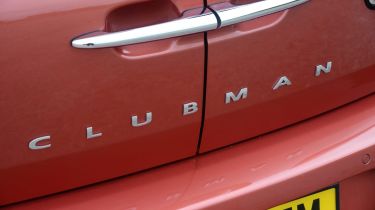MINI Clubman review - MPG, CO2 and running costs
Punchy performance and efficient engines make the Clubman an ideal family car

The Clubman is around £4,000 more expensive than the five-door MINI hatchback, but it’s worth remembering that the Clubman is a rival for the Volkswagen Golf, so is priced to compete with a larger class of car. Most buyers are likely to go for the petrol Cooper which returns up to 47.1mpg on the WLTP combined cycle, and emits 141g/km.
An eight-speed auto adds a premium to the Clubman's price, but it does help to return slightly better fuel economy. It’s a particularly effective unit that’s smooth and boasts quick changes, so if you’re doing a lot of urban driving, it may be worth the extra outlay.
Those after greater performance are well catered for by the Cooper S. It's powered by a 176bhp 2.0-litre four-cylinder turbo, which propels it from 0-62mph in 7.2 seconds and returns up to 42.2mpg, or up to 44.8mpg for the auto version. Buyers opting for the hardcore John Cooper Works model still benefit from average economy of up to 38.2mpg, although this may be a touch optimistic if you choose to exploit the full JCW performance on a regular basis.
Insurance groups
With modest power outputs and reasonable list prices, the Clubman attracts relatively low insurance groups. The range starts in group 20 for a Cooper, climbing to group 26 for Cooper S models. The powerful JCW model occupies group 40 and will be considerably more expensive to insure than other models in the range.
Depreciation
MINIs typically have strong residual values, but the Clubman's depreciation can vary depending on how you specify it. Over an average ownership period of three years and 36k miles, you can expect the Clubman to retain an average of 50 per cent of its original value.








